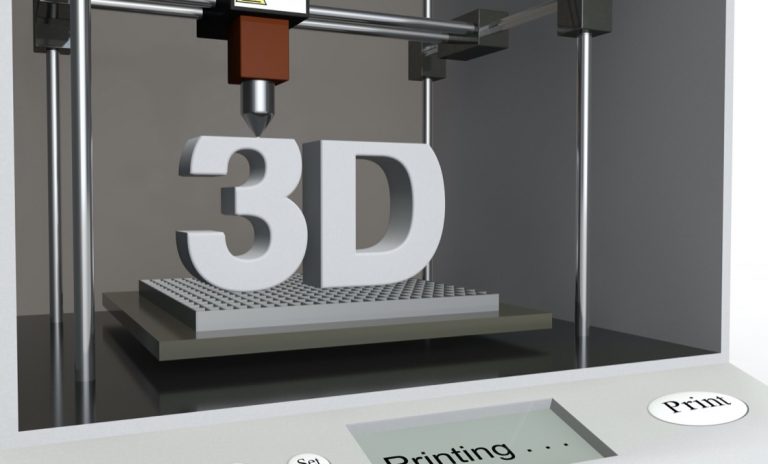Do you want a sustainable tool to help you save money? Do you enjoy crafting and coding? Do you want access to the latest technology of the future?
Do you want a way to create custom gifts? Do you want a potential source of income, too?
You can get all of these and more using a 3D printer. If you’re already looking into purchasing one of these excellent tools, you need to understand how to use them. Learn some helpful 3D printing tips with this guide.
1. Prepare with the Right Gear
Whatever materials you choose to work with, you need to stay safe when using 3D printers. Although some of the following suggestions are more for personal preferences when working, others are simply for your safety—any kind of craftwork, especially when high-speed cutting with a laser printer, requires safety gear.
Protecting Your Eyes
When working with any material on a 3D printer, you need eye protection. You can opt for full coverage protection like the same safety goggles carpenters or chemists wear. You can also choose something lighter, like essential safety glasses.
Protecting your eyes is necessary to prevent any flyaway shards from entering your eyes. No matter how slowly or carefully you cut even dense materials, there’s a chance of kickback. The safest option is to protect your vision simply.
Protecting Your Lungs
These 3D printing tips include lung protection, primarily based on the materials you work with. Unlike eye protection, protecting your lungs only depends on the chemicals released while printing. Some chemicals release toxic fumes; others don’t.
You can avoid toxic fume accumulation by working in a well-ventilated area. Nylon, ABS, and other liquid resins produce adverse side effects. If working with the materials for extended periods, you’ll need a respirator mask and air purifier.
Protecting Your Hands
Protecting your hands serves a cosmetic feature. If you want materials, you print on to not be affected by your finger oils or fingerprints, wear a pair of gloves. You may also need gloves for safety, depending on the material you use.
Consider disposable gloves to protect from any hazardous chemicals like resin. Some 3D printers require solvents to work. You don’t want that on your skin at all.
The best thing for you to do is avoid touching your 3D printed forms until they dry. Once dry, wash and cure them for the safest protection.
2. Do Your Homework
When you purchase a 3D printer, do your homework! Research the best type of 3D printer for your needs. Unless you intend to produce large quantities for a business, you probably won’t need a commercial printer.
Make sure you compare different types of 3D printers, too. When you find a model or brand you like, visit the homepage of their website to learn more.
Read the Manual
After you purchase a 3D printer, you need to learn how to use it. It’s not a simple plug-and-play sort of toy. Instead, it requires patience and research.
The best thing for maximum satisfaction when using a 3D printer requires reading the manual. You’ll be guided through assembling the machine, as well as the possible things your device can do.
You’ll also learn how to calibrate your machine to avoid wasting material on failed prints. Some models even come with pre-built kits for you to follow. Some manuals are more in-depth than others, so don’t rush through getting to know your machine.
3. Don’t Rush the Process
Patience is crucial to making the most of your investment in a 3D printer. These 3D printing tips all require time and dedication. From protection to preparation, rushing the process is unwise.
When you take your time calibrating your machine, you save yourself lots of troubleshooting later on. The following are some common errors rushed 3D printer setup creates.
Layer Slipping
Layer slipping happens when the printhead moves out of position. When your machine isn’t calibrated correctly, this is more likely. You’ll also experience this when high-speed printing.
It might also be a result of belt and pulley tension issues. Or, it may result from overheated electronics.
Under Extrusion
Under extrusion happens a lot for new users when the printed edge of a piece has small gaps. This might result from low print temperature, filament diameter, or extrusion multiplier.
Bridging Issues
Bridging issues happen when the horizontal space between two printed points lacks integrity. This might require a bridge calibration test to determine the source of the problems. It often results from small supports, fan settings, or print speed.
4. Keep Your Machine Calibrated
No matter your print speed and patience, 3D printers often miscalibrate. The best way to fix this is to maintain your machine.
You should routinely calibrate your machine. You should also regularly wipe down residue leftover from materials. These 3D printing tips emphasize maintenance to save you lots of time and headaches.
A straightforward way to determine any issues in your machine is by studying the last print made. Keep track of any problems you see. Also, keep a log of your maintenance to make sure you stay on top of it.
5. Embrace Your Creative Side
One of the best parts of using a 3D printer is the creative aspect. Your options for using a 3D printer are limited by your experience, time, and material budget.
There are all sorts of models for free or at low cost online if you don’t have a lot of experience coding. The more time you spend using your 3D printer, the more expressive you can get with your machine.
Where to Find Even More 3D Printing Tips
Now that you know the basics from these 3D printing tips, you’re ready to get printing. Once you feel more comfortable printing materials, you might need more advice or information. Check out our site to learn more helpful tips about 3D printers and more.



0 Comments